A Gradient-Field Pulsed Eddy Current Probe for Evaluation of Hidden Material Degradation in Conductive Structures Based on Lift-Off Invariance
Abstract
:1. Introduction
2. Field Formulation of GPEC and Investigation of LOI
2.1. Field Formulation
2.2. Investigation of LOI of GPEC
3. LOI-Based Inverse Scheme for Evaluation of HMD Properties
4. Corroboration via Finite Element Modeling
5. Experiments
6. Concluding Remarks
Acknowledgments
Author Contributions
Conflicts of Interest
References
- Calabrese, L.; Proverbio, E.; Galtieri, G.; Borsellino, C. Effect of Corrosion Degradation on Failure Mechanisms of Aluminium/steel Clinched Joints. Mater. Des. 2015, 87, 473–481. [Google Scholar] [CrossRef]
- Javier, M.; Jaime, G.; Ernesto, S. Non-Destructive Techniques Based on Eddy Current Testing. Sensors 2011, 11, 2525–2565. [Google Scholar] [CrossRef]
- Zhou, D.Q.; Li, Y.; Yan, X.; You, L.; Zhang, Q.; Liu, X.B.; Qi, Y. The Investigation on The Optimal Design of Rectangular PECT Probes for Evaluation of Defects in Conductive Structures. Int. J. Appl. Electromagn. Mech. 2013, 42, 319–326. [Google Scholar]
- Li, Y.; Yan, B.; Li, D.; Li, Y.L.; Zhou, D.Q. Gradient-field Pulsed Eddy Current Probes for Imaging of Hidden Corrosion in Conductive Structures. Sens. Actuators A Phys. 2016, 238, 251–265. [Google Scholar] [CrossRef]
- Mandache, C.; Lefebvre, J. Transient and Harmonic Eddy Currents: Lift-off Point of Intersection. NDT & E Int. 2006, 39, 57–60. [Google Scholar]
- Fan, M.B.; Cao, B.H.; Yang, P.P.; Li, W.; Tian, G.Y. Elimination of Liftoff Effect Using a Model-based Method for Eddy Current Characterization of a Plate. NDT E Int. 2015, 74, 66–71. [Google Scholar] [CrossRef]
- Li, Y.; Chen, Z.M.; Qi, Y. Generalized Analytical Expressions of Liftoff Intersection in PEC and a Liftoff-intersection-based Fast Inverse Model. IEEE Trans. Magn. 2011, 47, 2931–2934. [Google Scholar] [CrossRef]
- Fan, M.B.; Cao, B.H.; Tian, G.Y.; Ye, B.; Li, W. Thickness Measurement Using Liftoff Point of Intersection in Pulsed Eddy Current Responses for Elimination of Liftoff Effect. Sens. Actuators A Phys. 2016, 251, 66–74. [Google Scholar] [CrossRef]
- Giguere, J.; Dubois, J. Pulsed Eddy Current: Finding Corrosion Independently of Transducer Lift-off. AIP Conf. Proc. 2000, 509, 449–456. [Google Scholar]
- Giguere, J.; Lepine, A.; Dubois, J. Detection of Cracks Beneath Rivets via Pulsed Eddy Current Technique. AIP Conf. Proc. 2002, 21, 1968–1975. [Google Scholar]
- Tian, G.Y.; Li, Y.; Mandache, C. Study of Lift-off Invariance for Pulsed Eddy-Current Signals. IEEE Trans. Magn. 2009, 45, 184–191. [Google Scholar] [CrossRef]
- Xie, S.J.; Chen, Z.M.; Takagi, T.; Uchimoto, T. Quantitative Non-destructive Evaluation of Wall Thinning Defect in Double-layer Pipe of Nuclear Power Plants Using Pulsed ECT Method. NDT E Int. 2015, 75, 87–95. [Google Scholar] [CrossRef]
- Bai, B.; Tian, Y.; Simm, A.; Tian, L.; Cheng, H. Fast Crack Profile Reconstruction Using Pulsed Eddy Current Signals. NDT E Int. 2013, 54, 37–44. [Google Scholar] [CrossRef]
- Li, Y.; Tian, G.Y.; Simm, A. Fast Analytical Modelling for Pulsed Eddy Current Evaluation. NDT E Int. 2008, 41, 477–483. [Google Scholar] [CrossRef]
- Madsen, K.; Nielsen, H.B.; Tingleff, O. Methods for Nonlinear Least Squares Problems. Soc. Ind. Appl. Math. 2012, 1, 1409–1415. [Google Scholar]
- Li, Y.; Yan, B.; Li, D.; Jing, H.Q.; Li, Y.L.; Chen, Z.M. Pulse-modulation Eddy Current Inspection of Subsurface Corrosion in Conductive Structures. NDT E Int. 2016, 79, 142–149. [Google Scholar] [CrossRef]
- Li, Y.; Yan, B.; Li, W.J.; Li, D. Thickness Assessment of Thermal Barrier Coatings of Aeroengine Blades via Dual-frequency Eddy Current Evaluation. IEEE Magn. Lett. 2016, 7, 1304905. [Google Scholar] [CrossRef]
- Li, Y.; Chen, Z.M.; Mao, Y.; Qi, Y. Quantitative Evaluation of Thermal Barrier Coating Based on Eddy Current Technique. NDT E Int. 2012, 50, 29–35. [Google Scholar]
- Bowler, J.; Johnson, M. Pulsed Eddy-current Response to a Conducting Half-space. IEEE Trans. Magn. 1997, 33, 2258–2264. [Google Scholar] [CrossRef]
- Rosell, A. Efficient Finite Element Modeling of Eddy Current Probability of Detection with Transmitter–Receiver Sensors. NDT E Int. 2015, 75, 48–56. [Google Scholar] [CrossRef]
- Rosell, A.; Persson, G. Finite Element Modeling of Closed Cracks in Eddy Current Testing. Int. J. Fatigue 2012, 41, 30–38. [Google Scholar] [CrossRef]
- Wang, X.; Xie, S.J.; Li, Y.; Chen, Z.M. Efficient Numerical Simulation of DC Potential Drop Signals for Application to Metallic Foam. COMPEL: Int. J. Comp. Math. Electr. Electron. Eng. 2014, 3, 147–156. [Google Scholar] [CrossRef]
- Zhang, J.; Xie, J.; Wang, J.; Li, Y.; Chen, M. Quantitative Non-destructive Testing of Metallic Foam Based on Direct Current Potential Drop Method. IEEE Trans. Magn. 2012, 48, 375–378. [Google Scholar] [CrossRef]
- Brinnel, V.; Dobereiner, B.; Munstermann, S. Characterizing Ductile Damage and Failure: Application of the Direct Current Potential Drop Method to Uncracked Tensile Specimens. Procedia Mater. Sci. 2014, 3, 1161–1166. [Google Scholar] [CrossRef]
- Ali, M.R.; Saka, M.; Tohmyoh, H. A Time-dependent Direct Current Potential Drop Method to Evaluate Thickness of an Oxide Layer Formed Naturally and Thermally on a Large surface of Carbon Steel. Thin Solid Films 2012, 525, 77–83. [Google Scholar] [CrossRef]

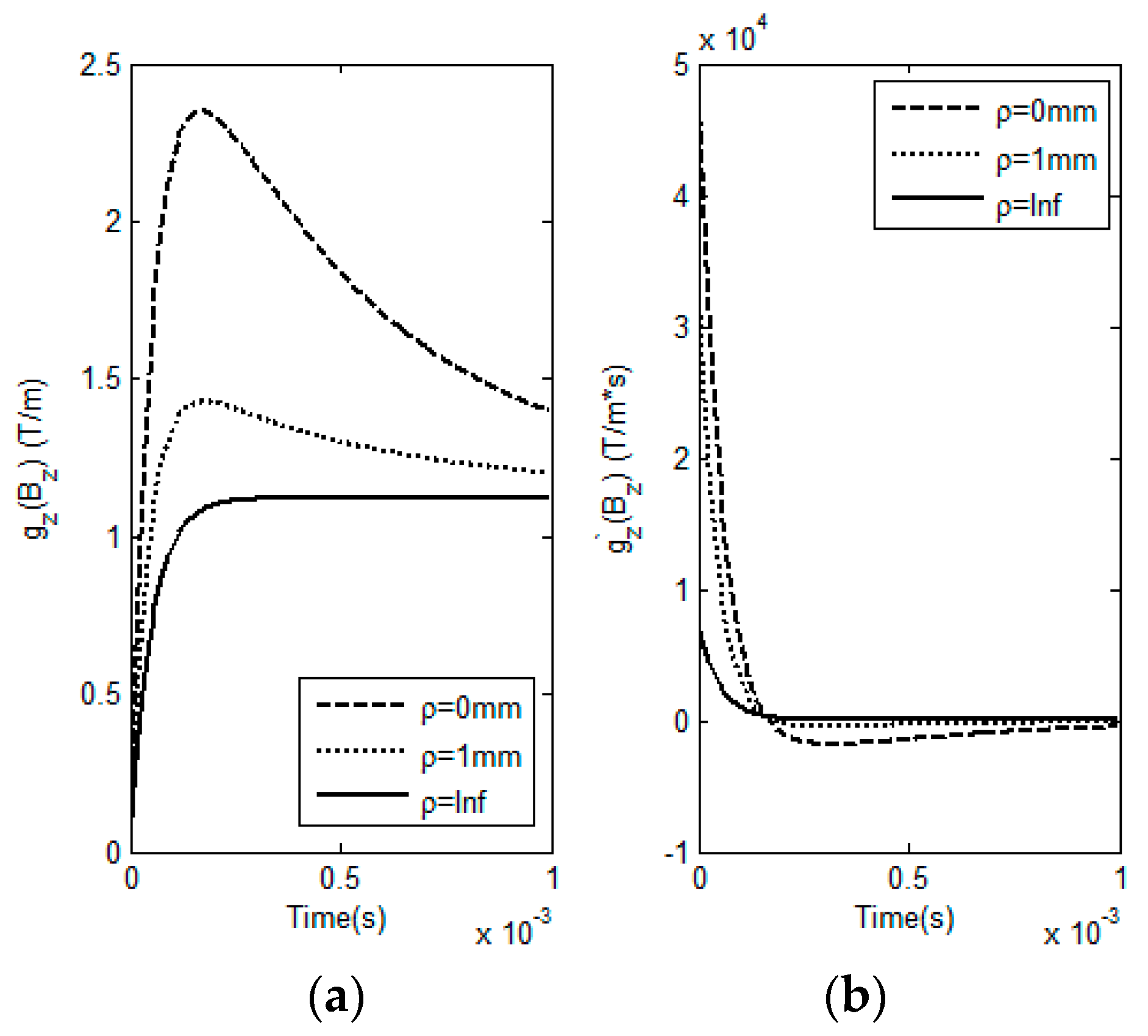

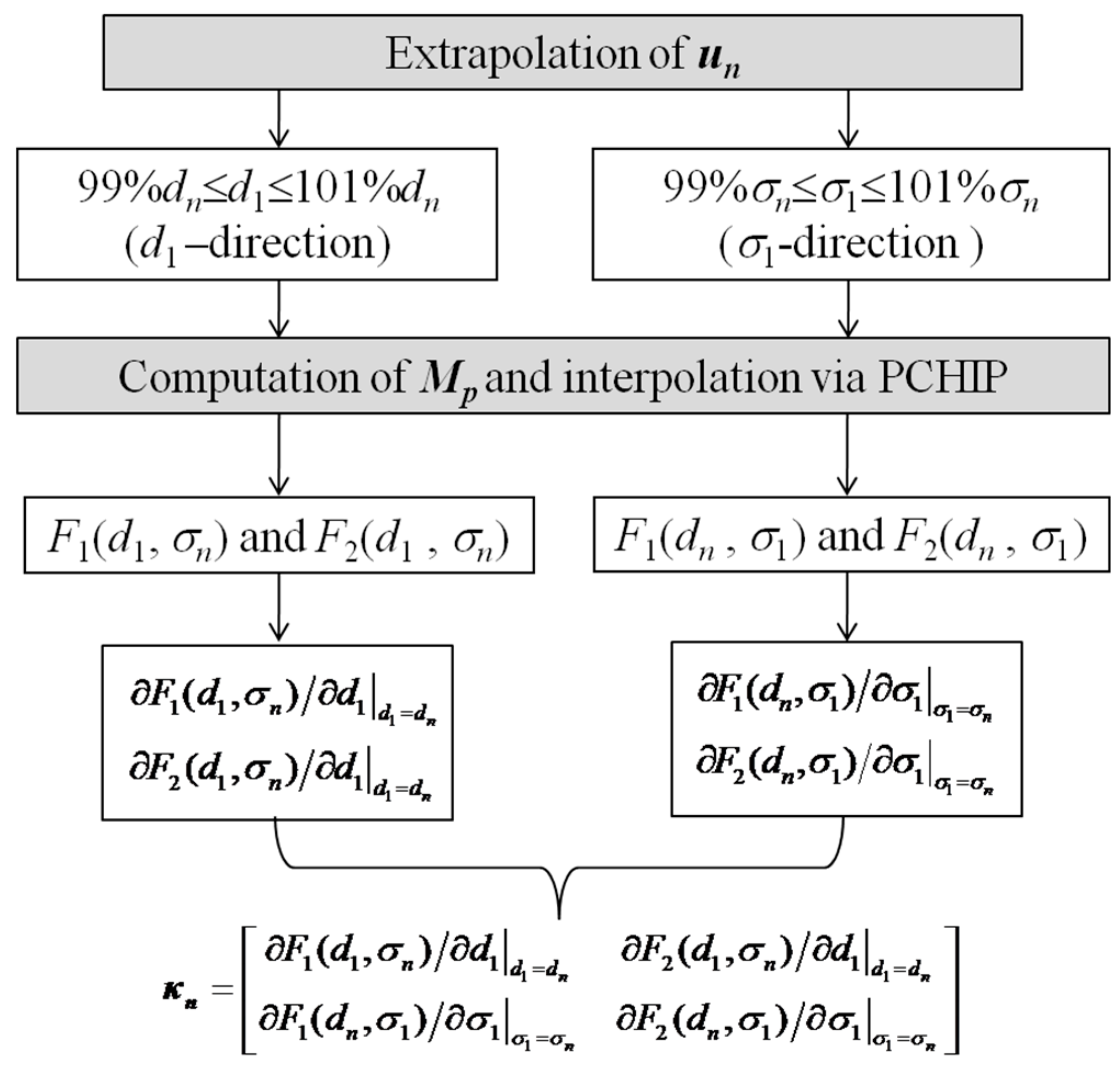

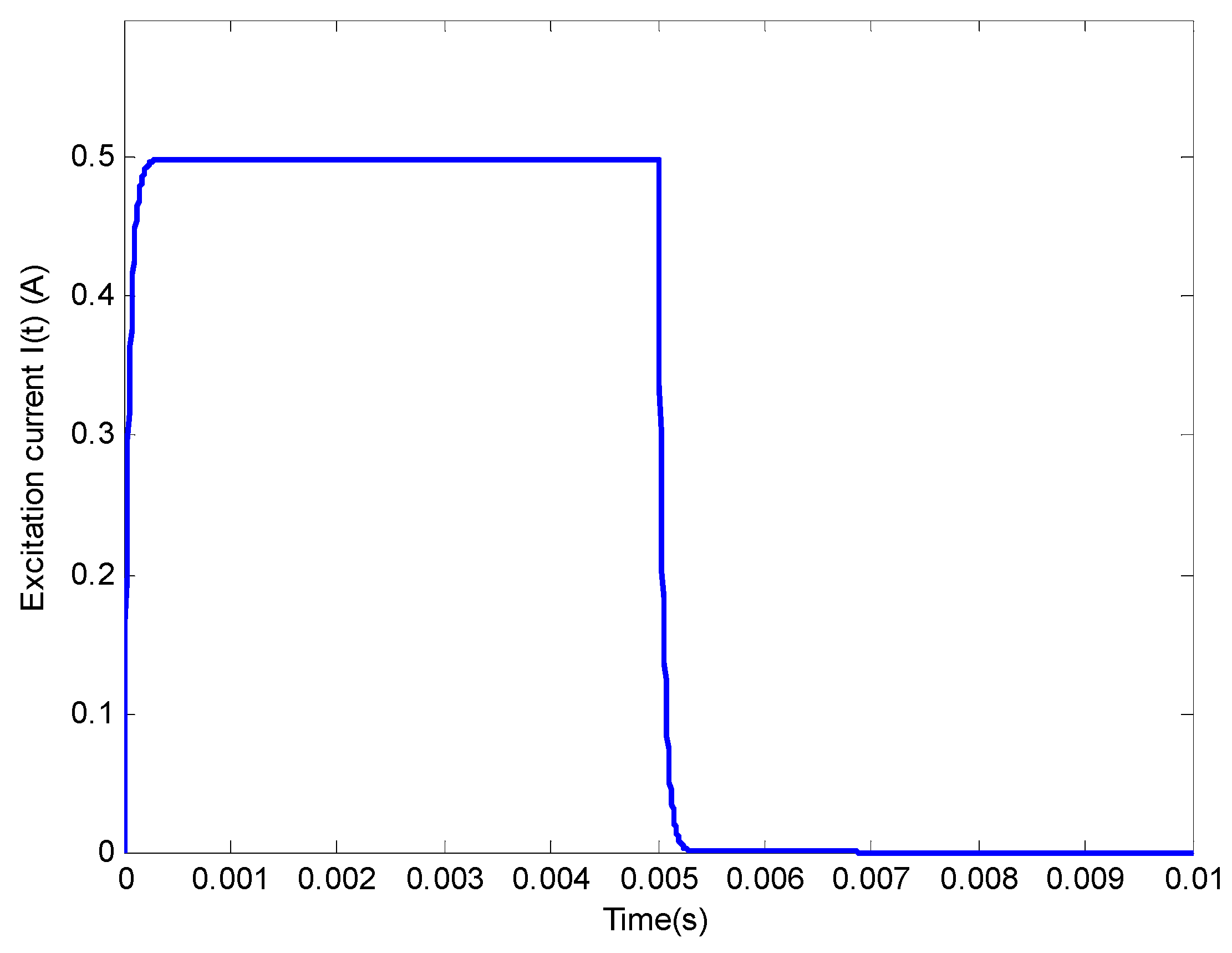
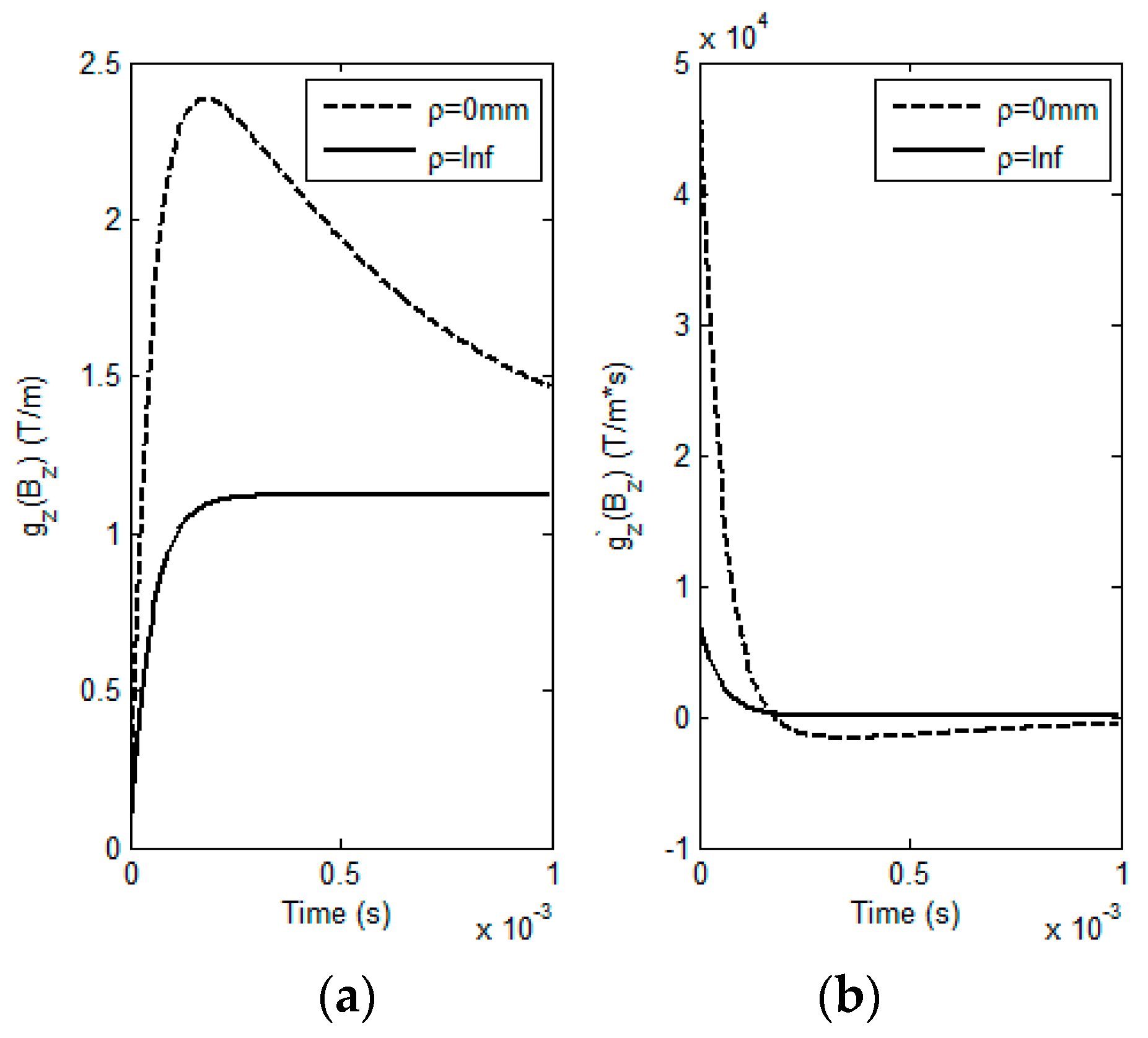
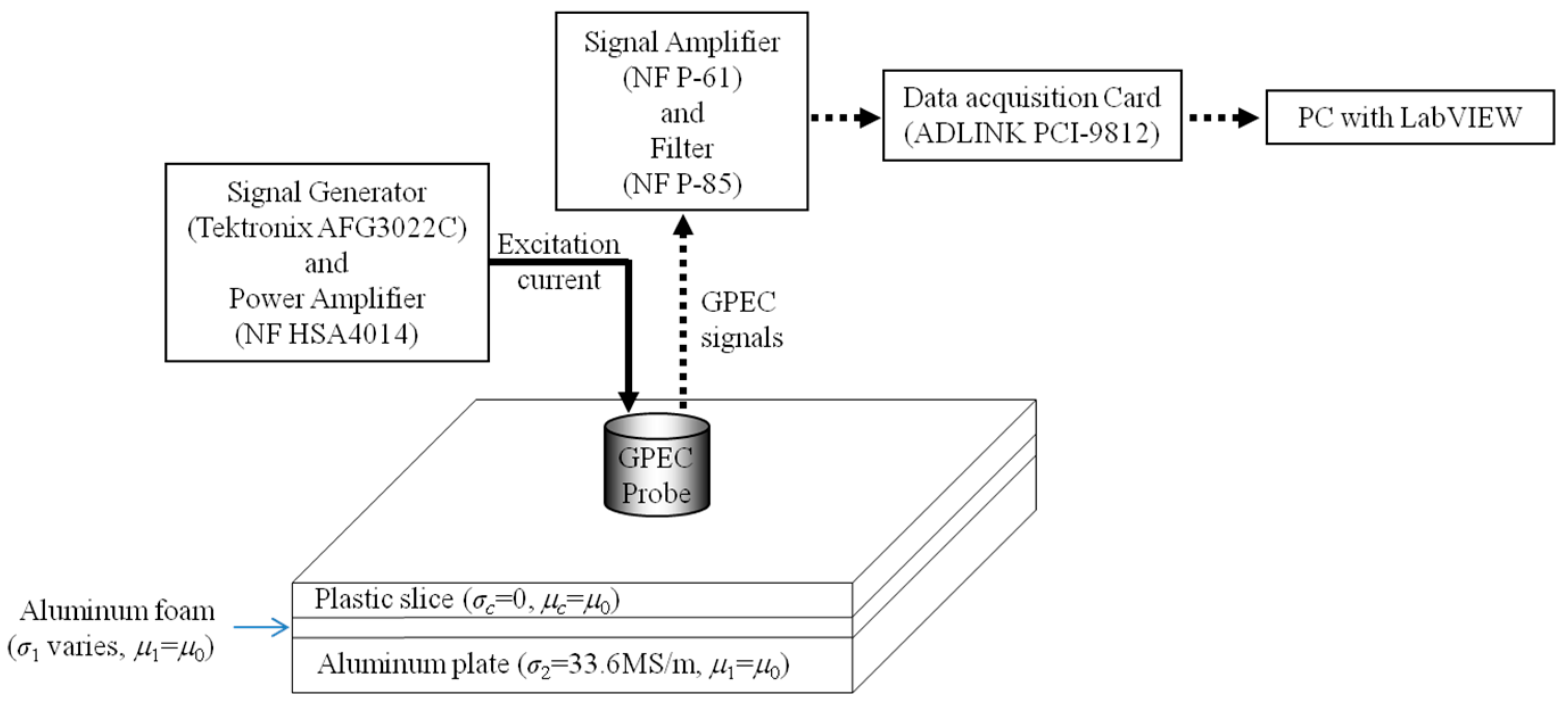

| Coil Parameters | Value |
|---|---|
| Inner radius, r1 (mm) | 11.3 |
| Outer radius, r2 (mm) | 12.5 |
| Height, z2 − z1 (mm) | 6.6 |
| Number of turns, N | 804 |
| Sample Parameters | Value |
|---|---|
| Thickness of the coating, z1 (mm) | 0.64 |
| Thickness of the degradation layer, d1 (mm) | 0.0~3.0 |
| Conductivity of the degradation layer, σ1 (MS/m) | 25.0~34.2 |
| Thickness of the conductor, d2 (mm) | 5.0 |
| Conductivity of the conductive plate, σ2 (MS/m) | 34.2 |
| SNR | Inf * | 26 dB | 20 dB | 14 dB |
|---|---|---|---|---|
| utrue | [1.60 mm, 28.50 MS/m] | |||
| uest | [1.63 mm, 29.05 MS/m] | [1.54 mm, 27.19 MS/m] | [1.68 mm, 26.83 MS/m] | [1.49 mm, 26.42 MS/m] |
| Relative error | [1.7%, 1.9%] | [3.8%, 4.6%] | [5.1%, 5.8%] | [6.9%, 7.3%] |
| #1 | #2 | #3 | |
|---|---|---|---|
| Thickness of the plastic slice, z1 (mm) | 0.2 | 0.5 | 0.2 |
| Thickness of the Aluminum foam, d1 (mm) | 0.9 | 1.5 | 1.8 |
| Conductivity of the Aluminum foam, σ1 (MS/m) | 32.3 | 25.9 | 21.2 |
| Thickness of the Aluminum block, d2 − d1 (mm) | 4.1 | 3.5 | 3.2 |
| Specimen #1 | Specimen #2 | Specimen #3 | |
|---|---|---|---|
| utrue | [0.9 mm, 32.3 MS/m] | [1.5 mm, 25.9 MS/m] | [1.8 mm, 21.2 MS/m] |
| uest | [0.86 mm, 30.63 MS/m] | [1.42 mm, 28.05 MS/m] | [1.87 mm, 19.89 MS/m] |
| Relative error | [4.4%, 5.2%] | [5.3%, 8.3%] | [3.9%, 6.2%] |
© 2017 by the authors. Licensee MDPI, Basel, Switzerland. This article is an open access article distributed under the terms and conditions of the Creative Commons Attribution (CC BY) license (http://creativecommons.org/licenses/by/4.0/).
Share and Cite
Li, Y.; Jing, H.; Zainal Abidin, I.M.; Yan, B. A Gradient-Field Pulsed Eddy Current Probe for Evaluation of Hidden Material Degradation in Conductive Structures Based on Lift-Off Invariance. Sensors 2017, 17, 943. https://doi.org/10.3390/s17050943
Li Y, Jing H, Zainal Abidin IM, Yan B. A Gradient-Field Pulsed Eddy Current Probe for Evaluation of Hidden Material Degradation in Conductive Structures Based on Lift-Off Invariance. Sensors. 2017; 17(5):943. https://doi.org/10.3390/s17050943
Chicago/Turabian StyleLi, Yong, Haoqing Jing, Ilham Mukriz Zainal Abidin, and Bei Yan. 2017. "A Gradient-Field Pulsed Eddy Current Probe for Evaluation of Hidden Material Degradation in Conductive Structures Based on Lift-Off Invariance" Sensors 17, no. 5: 943. https://doi.org/10.3390/s17050943






